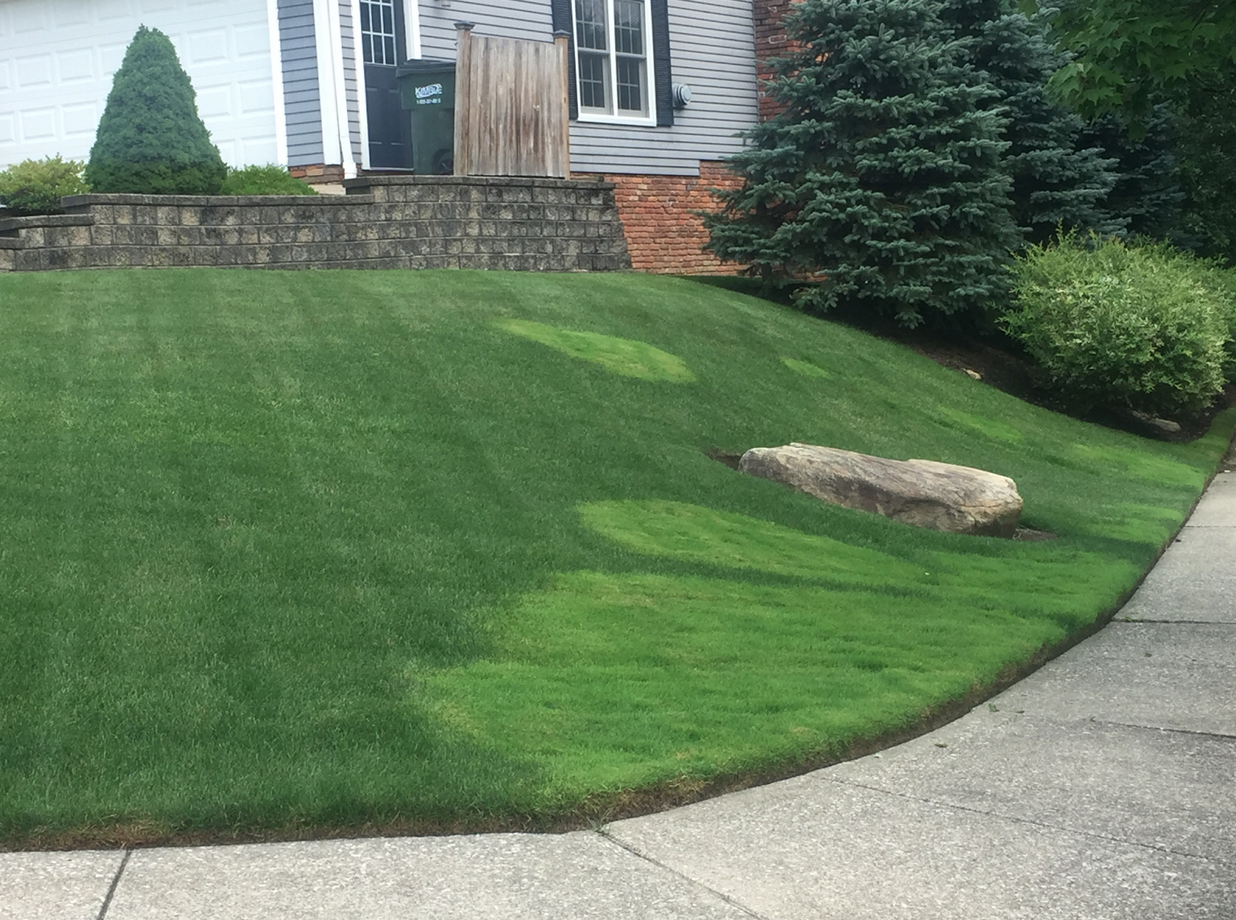CREEPING BENTGRASS CONTROL
Many Cleveland Heights and Shaker Heights-area homeowners are frustrated by the gradual infestation of creeping bentgrass in their lawn resulting in a patchy and inconsistent appearing lawn. When manicured on a golf course, creeping bentgrass is desirable, but in a low maintenance residential lawn, this uninvited pest is considered a weed.
Unfortunately, creeping bentgrass is prevalent in the Heights area and can spread due to animals, weather and equipment sharing. A small sprig of the grass plant that goes unnoticed will grow over time into progressively larger patches, eventually coalescing to take over large swaths of the lawn. If left unattended, options become more limited for controlling this pest and may require a Lawn Renovation or starting over with a New Lawn Installation.
Not too long ago, control options were limited; however, the recent introduction and availability of selective herbicides has made creeping bentgrass control a cost-effective residential lawn care option.
Creeping Bentgrass Control Program:
Effective control requires properly timed, successive, and selective herbicide applications to knock out any creeping bentgrass plants. The application is made to the entire lawn to target individual plants as well as recognizable patches. Treating only visible patches will allow undetected plants to survive.
After the first application, the creeping bentgrass will turn white, which flags the presence of the creeping bentgrass; 10-14 days later a second application is made which will turn the creeping bentgrass brown as it dies off.
The Preventive Program is used after a lawn renovation or new lawn has been completed and to proactively remove creeping bentgrass before it becomes noticeable and takes over large areas of the lawn. We begin with one mid-spring application followed by a second application. If there is no flagging after the first application, which indicates no detectable creeping bentgrass, the second application will be reserved for later in the summer.
The Curative Program is used when sufficient creeping bentgrass and followup seeding or a lawn renovation will be necessary. The first application is typically made in mid- to late July, with follow-up applications to ensure the creeping bentgrass has died off before early fall reseeding work begins. While this process can occur into September, it is best to start earlier for better control and to allow more time for new seed establishment.
Contact us to find out if adding creeping bentgrass control to your existing lawn care package is a good fit.

Creeping bentgrass (light green patches) is easy to identify in early morning hours when the dew settles on the grass.

More on creeping bentgrass:
- Many Shaker Heights and Cleveland Heights homes were built in the early 20th century and creeping bentgrass was used to establish lawns in the area. Once creeping bentgrass has been introduced into an area, it’s difficult to eradicate it due to its physiology and growth characteristics.
- Creeping bentgrass grows rapidly in cool and wet conditions, and even tolerates shade. It prefers low mowing, and in the spring it grows rapidly, crowding out other grasses. As summer heat sets in, unirrigated creeping bentgrass usually turns brown and goes dormant. This not only creates a patchy appearance to the lawn but also allows annual weeds to get a foothold in these dormant patches.
- Creeping bentgrass spreads with above ground runners, or stolons, allowing it to creep and spread throughout the lawn. If ignored, the stolon growth forms a thick and spongy mat, which creates additional issues.
- Creeping bentgrass grows vegetatively, meaning a sprig or plug of the plant can become established and begin to spread. Clippings with uprooted stolons can readily become established in landscape beds. Leaving small plant parts behind may allow it to establish, making total control difficult.
- Effective creeping bentgrass maintenance requires a lot of work, including low mowing heights (best achieved with a reel mower), regular irrigation, more precise fertilizing, disease control applications (fungicides) and periodic verti-cutting (vertical mowing) to manage the stolen growth. Unless you’re committed to this level of maintenance, you’re better off to remove it.
Rooted in Customer Service Since 1979

Office/Shop Address: 441 South Green Road, South Euclid, Ohio 44121
Mailing Address: 471 Chagrin River Road, Cleveland, Ohio 44040
(216) 371-1935 • info@lawnlad.com
©Lawn Lad, Inc. 2023
